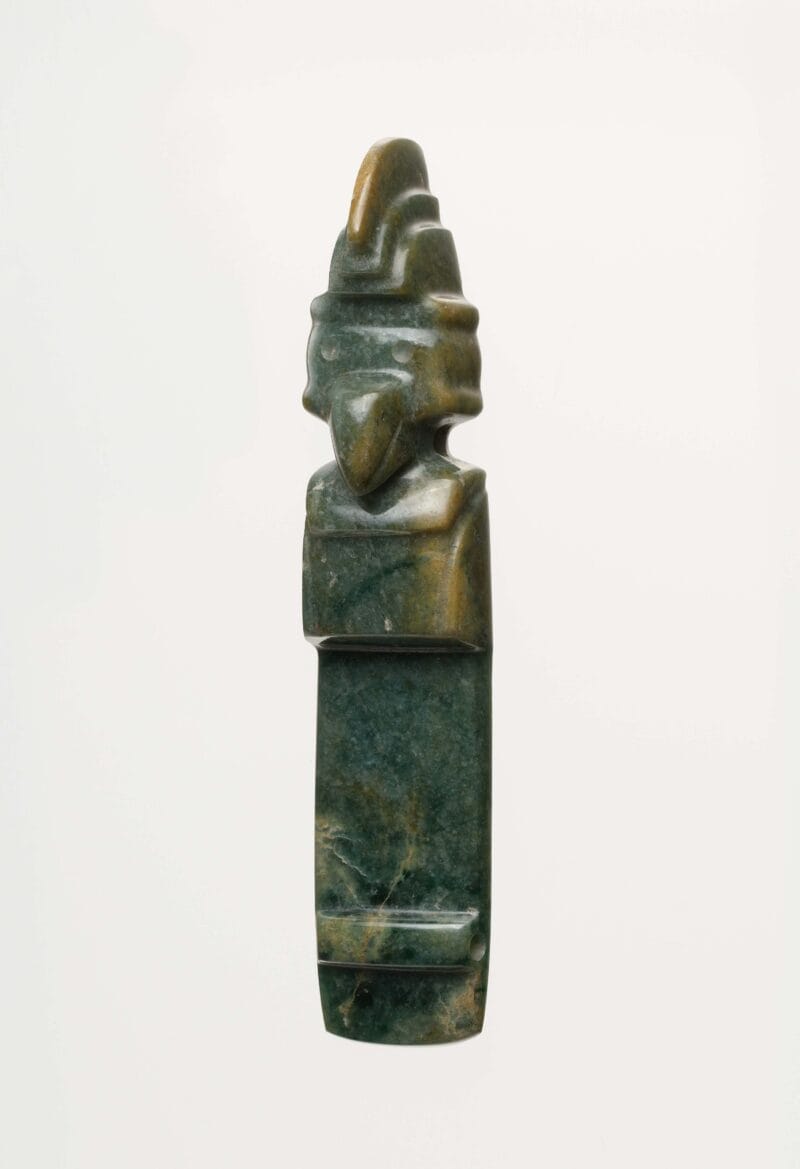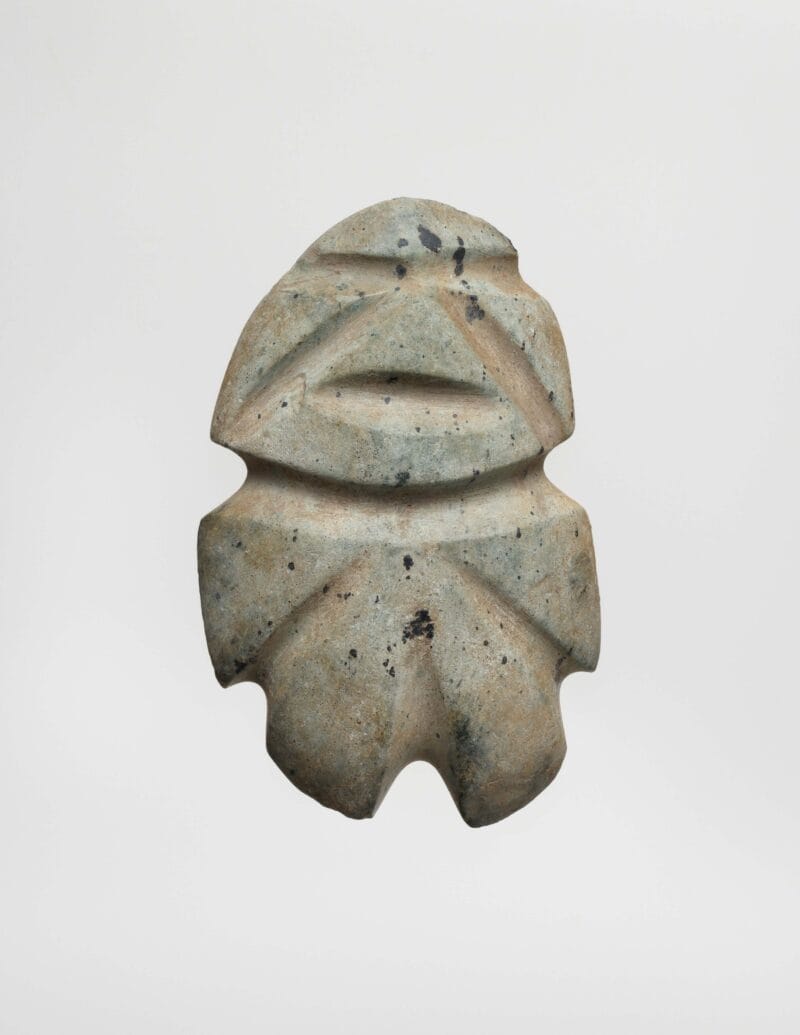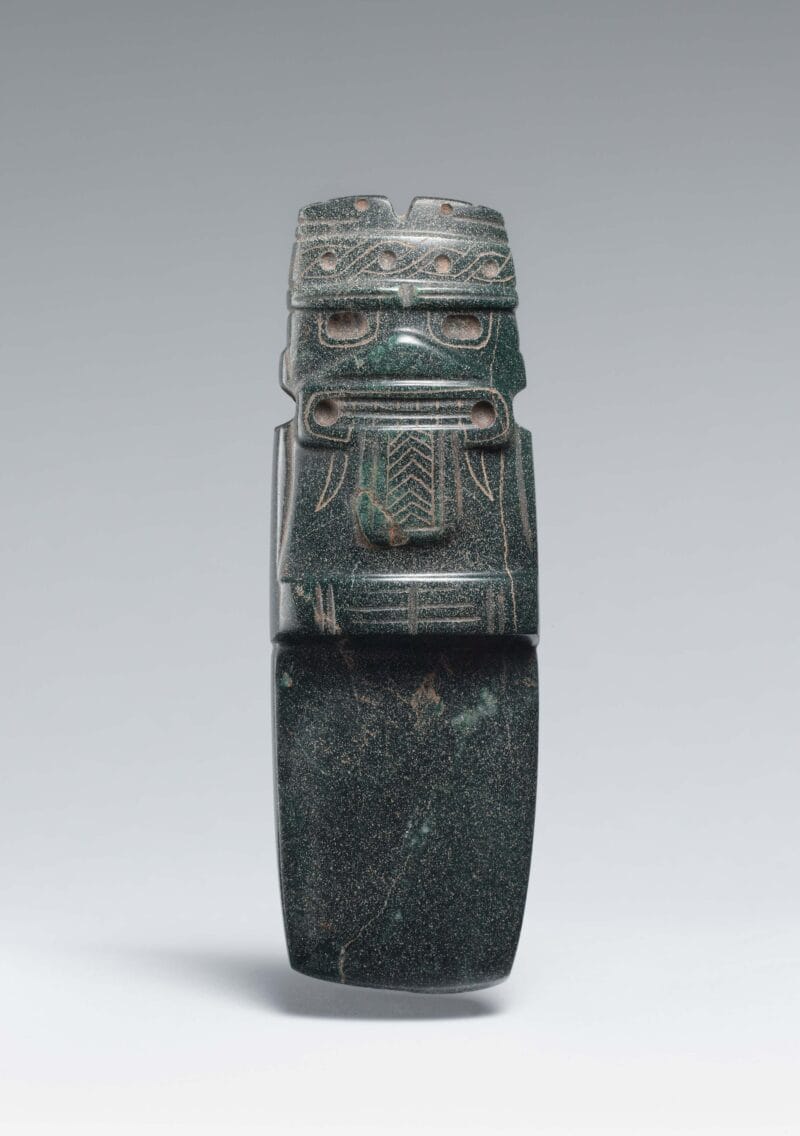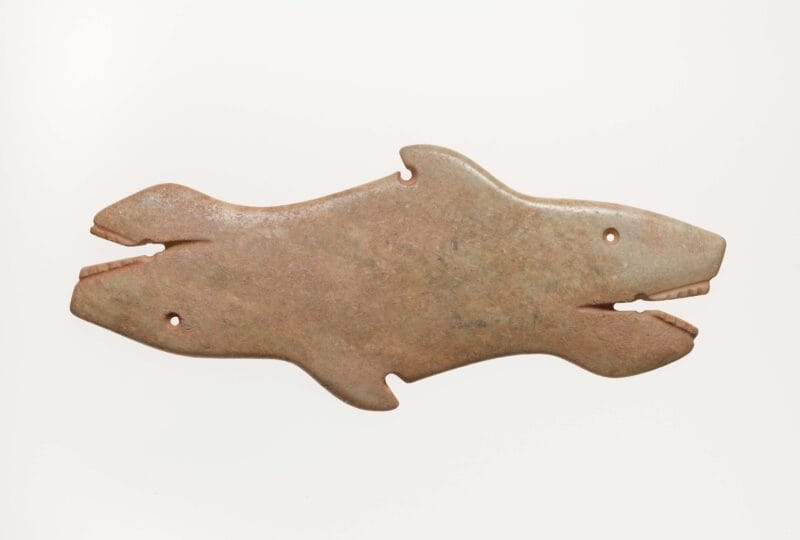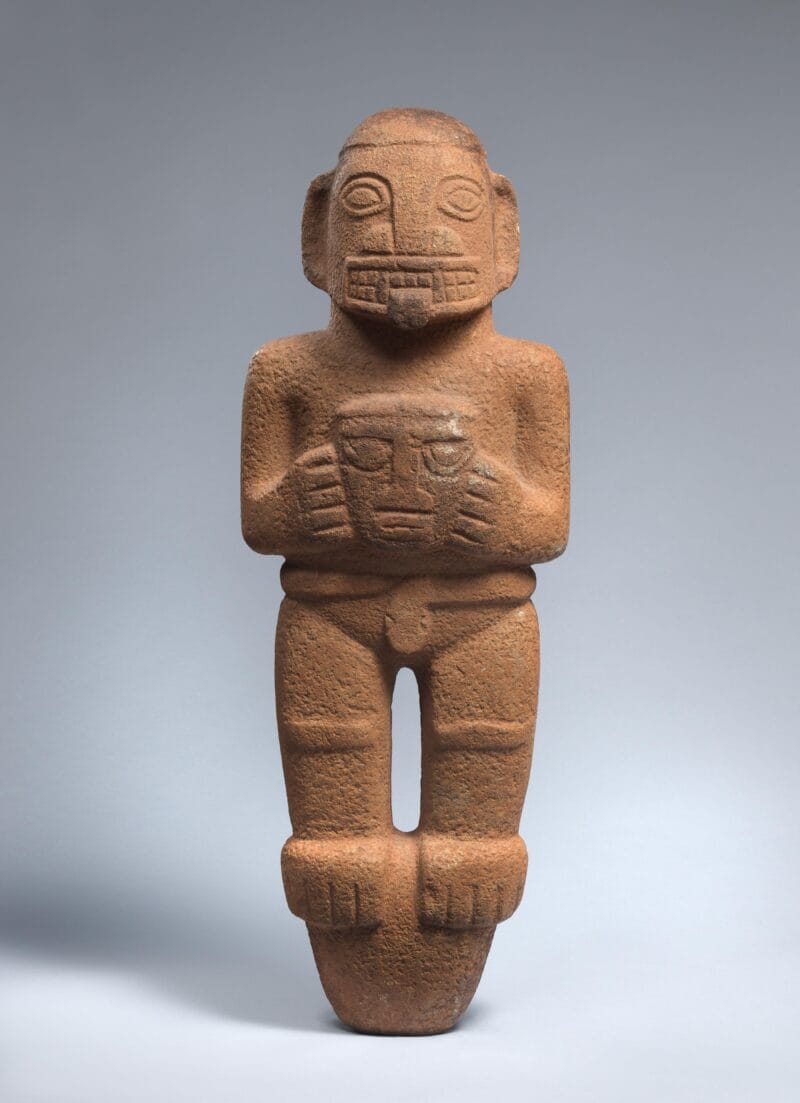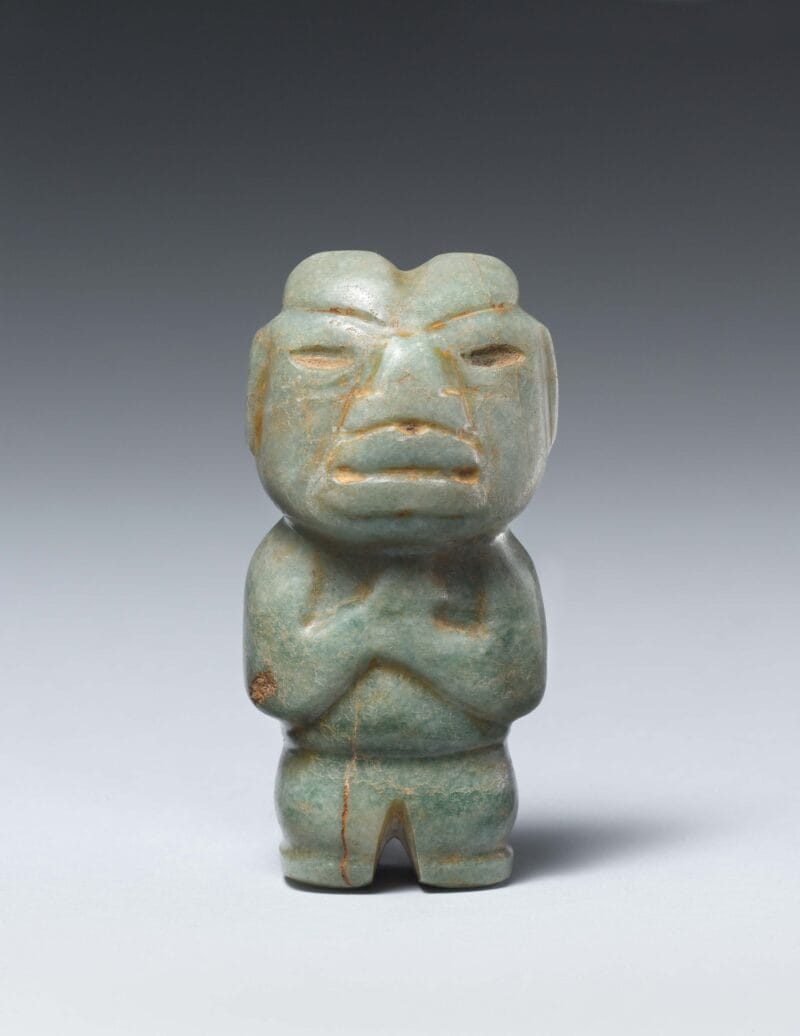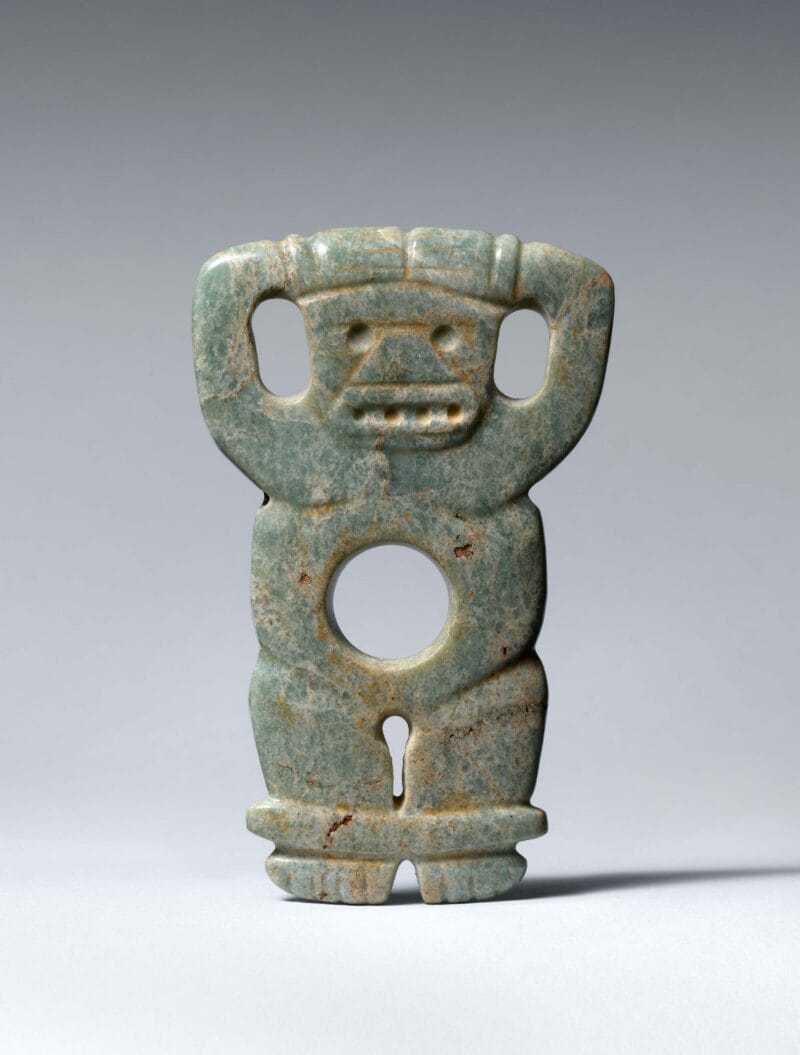
About the Object
Originally fashioned from flat jade, this was later carved into a human figure, believed to represent a shaman. Perhaps most notable is that the figure has a hole carved in the abdominal area, while the work’s facial expression is composed of drill marks for eyes, a flat-top pyramidal nose, and teeth probably created by using a stone tool to slowly pick out all of the facial features. Both hands are placed on the figure’s forehead, while the work’s ankles are connected by a horizontal band, possibly depicting ankle ornaments. Because the figure is flat and similar holes have been found in other such objects, it is believed that such jade pendants depicting shamans, anthropomorphic heads, and abstract figures were likely used as necklaces suspended by string.
Additional Information
Ancient Costa Rican communities, like those in Mesoamerica, probably valued jade as perhaps the most sacred material and it was associated with fertility. For example, the greenish hues of jade were associated with lush green vegetation. Given the symbolic importance and value placed on this material, jade pendants were most commonly found in burial sites of likely elites.
[Throckmorton Fine Art, New York, NY];
The Jan T. and Marica Vilcek Collection, 2000-2010;
Gift to The Vilcek Foundation, 2010;
